SENSUIKAN!
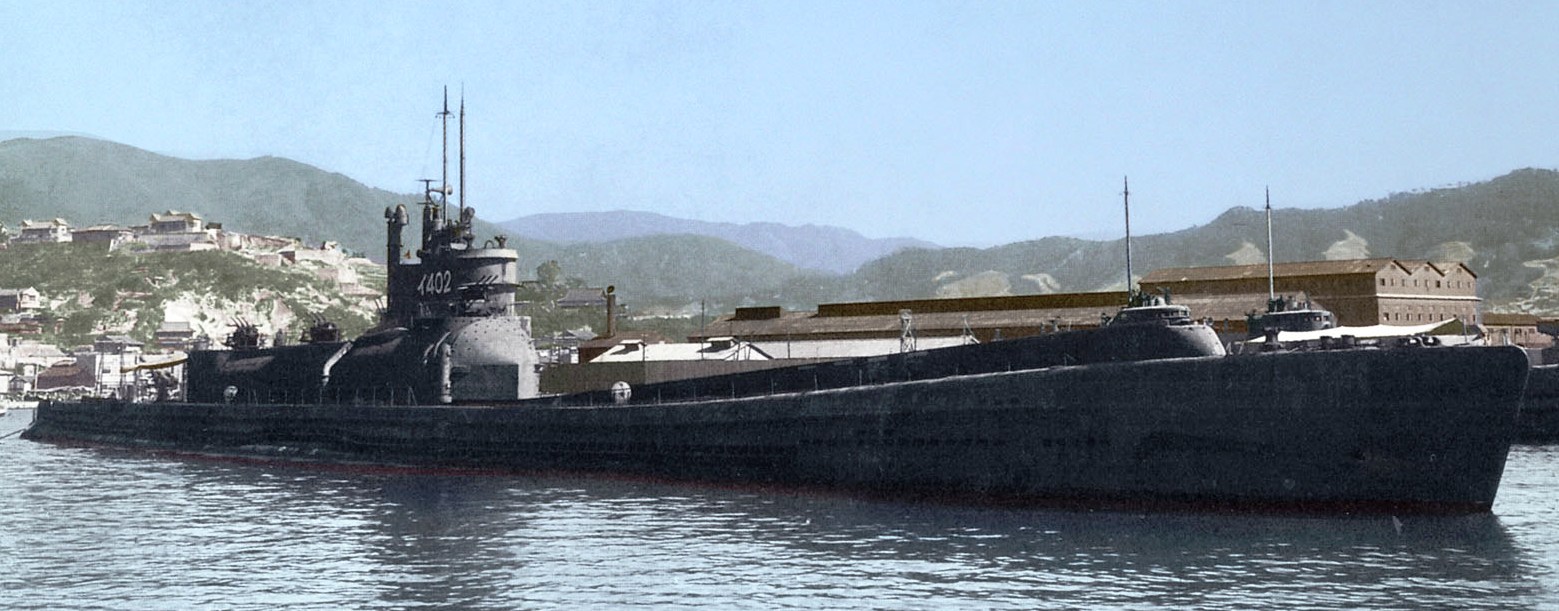 (I-402 colorized photo by Irootoko Jr)
(I-402 colorized photo by Irootoko Jr)
IJN Submarine I-402:
Tabular Record of
Movement
© 2001-2016 Bob Hackett & Sander Kingsepp
Revision 3
20 October 1943:
Sasebo Navy Yard. I-402 is laid down. This Sen Toku-class submarine was originally designed to carry three float torpedo-bombers, but during construction she is converted into an aviation gasoline tanker because of Japan's pressing need to transport fuel from the East Indies to the homeland.
5 September 1944:
Launched.
15 March 1945:
Cdr Nakamura Otoji (former CO of I-68 and I-5) is posted the Chief Equipping Officer (CEO).
24 July 1945:
Completed and registered in the Kure Naval District.
I-402 is attached to the Sixth Fleet in Captain Ariizumi Tatsunosuke's (former CO of the I-8) SubDiv 1 with I-13, I-14, I-400 and I-401. Cdr Nakamura is the Commanding Officer (CO).
11 August 1945:
After 1040, North American P-51D "Mustang" fighters from Iwo Jima raid the Kure area. I-402 suffers several near misses and her main fuel tanks are punctured in two places by fragments. Two sailors are wounded.
15 August 1945:
The Imperial Palace, Tokyo. Emperor Hirohito (Showa) broadcasts an Imperial Rescript that calls for an end to the hostilities.
September 1945:
Surrenders at Kure.
October 1945:
Under an American crew, I-402 departs Kure for Sasebo .
30 November 1945:
Removed from the Navy List.
26 March 1946: Submarine Officers Conference, Washington, DC:
The attendees, including former ComSubPac Vice Admiral Charles A. Lockwood, are told that "orders are being issued to dispose of all Japanese submarines by sinking. Those in Japan will be sunk at once, those in Pearl Harbor
when authorized by SCAP and at the discretion of CinCPAC". This statement included all surviving Japanese submarines, including those which had been incomplete or
which had been decommissioned at the time of their capture, and those moved to Pearl Harbor by the USN.
March 1946:
Tokyo. SCAP approves a plan that calls for all former Japanese Navy combatant ships larger than destroyer class to be completely scrapped. It calls for wrecked and heavily damaged ships to be sunk in
deep water and disposal of all submarines afloat. There are five main disposal areas for the Japanese submarines to be sunk at sea. These are Maizuru Bay, Kii Suido, Iyo Nada (The Inland Sea), off Sasebo Bay, and at “Point
Deep Six” off the island of Goto-Retto about 40 miles west of Nagasaki.
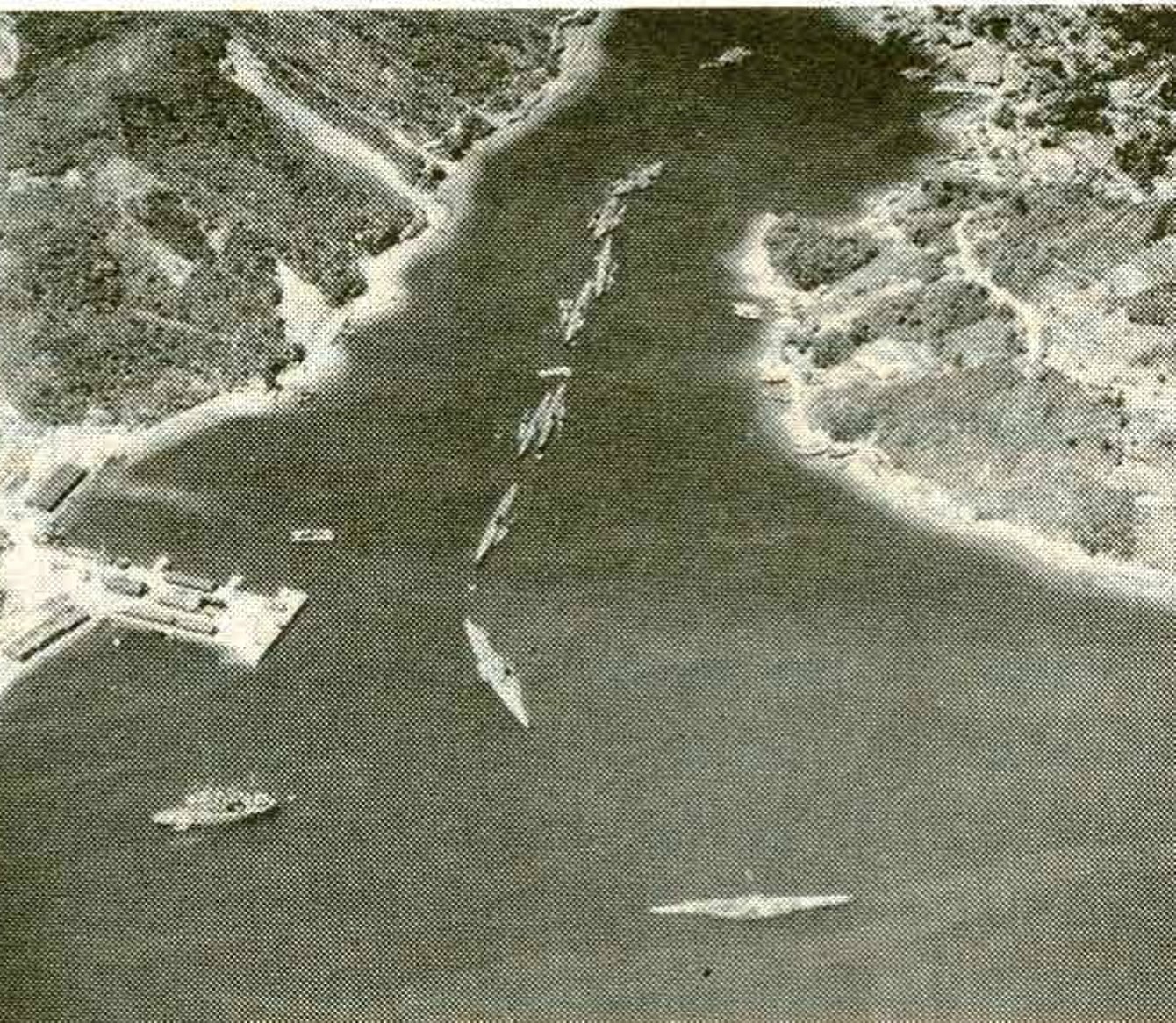 (Final Sortie from Sasebo)
(Final Sortie from Sasebo)
1 April 1946: “Operation “Road’s End”:
Twenty-four IJN submarines capable of sailing under their own power and manned by skeleton Japanese crews left Sasebo and were assembled at “Point Deep Six”.
There, they are sunk near the 100 fathom line, either by demolition charges or by gunfire from submarine tender USS NEREUS (AS-17) and destroyer USS EVERETT F. LARSON (DD-830).
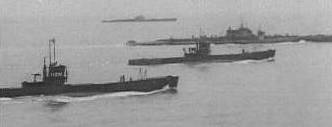 ("Roads End" subs underway)
1 April 1946: Operation "Road's End":
("Roads End" subs underway)
1 April 1946: Operation "Road's End":
Goto Islands. I-402, with HA-201 tied to her, is used for target practice by USS EVERETT F. LARSON (DD-830) and other warships. Later, she is scuttled 16 nautical miles off Kinai Island on bearing 090 just beyond the
100-fathom line at 32-37N, 129-17E.
2015:
Some recent sonar scans of the submarine graveyard off Goto Island.
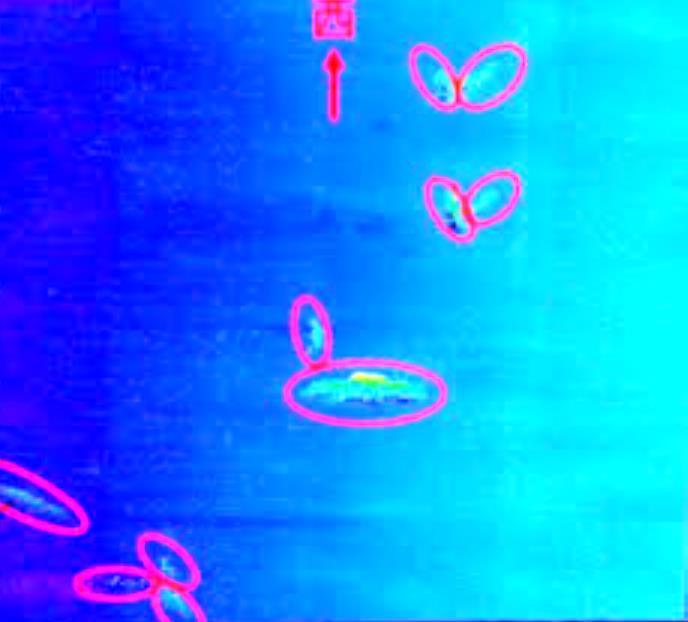 |
|
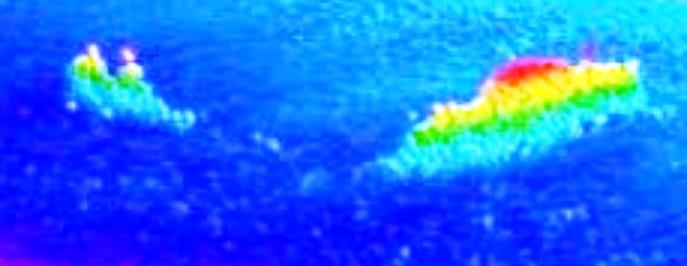 |
| Sonar scan of “Road’s End” wrecked subs |
|
Sonar scan possibly of I-402 |
Authors' Note:
Thanks go to Dr. Higuchi Tatsuhiro of Japan and to Derek Waller of UK for info about the Submarine Officers Conference. Thanks also go to reader J-air reader SteveC for the 2015 sonar scans by a
Japanese TV company.
– Bob Hackett and Sander Kingsepp
Back to Submarine
Page









